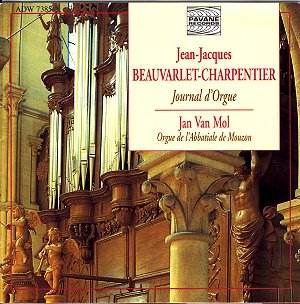
BUY NOW
Journal d’Orgue (?-1784): 1. Grand Choeur-Pastorale, 2. Elévation, 3. Trio de grosse Tierce, 4. Récit de Nazard, 5. Quartetto, 6. Duo, 7. Rondeau, 8. Récit de Tierces, 9. Grand Choeur-Carillon des morts pour le gloria patri au Magnificat de la Toussaint, 10. Dialogue de flûte et Cor qui se fait sur les Echôs, 11. Offertoire Conceto de hautbois ou flutte, 12. Dialogue pour le hautbois et la flûte, 13. Récit de voix humaine, 14. Marce pour les rentrées de processions, 15. Offertoire en simphonie Concertante, 16. Récit de Flûte, 17. Duo, 18. Récit de Cromorne, 19. Grand Choeur en Dialogue, 20. Noël-Duo, 21. Noël- Récit de flûte, 22. Noël-Tambourin, 23. Noël-Muzetto, 24. Noël-Récit de Voix, 25. Noël, 26. Offertoire-Rondo.
Organ by: Christoph Moucherel, 1725/Restoration by Bartolomeo Formantelli, 1991, Monastery Church of Mouzon, Ardennes, France.
Recorded: November 1996